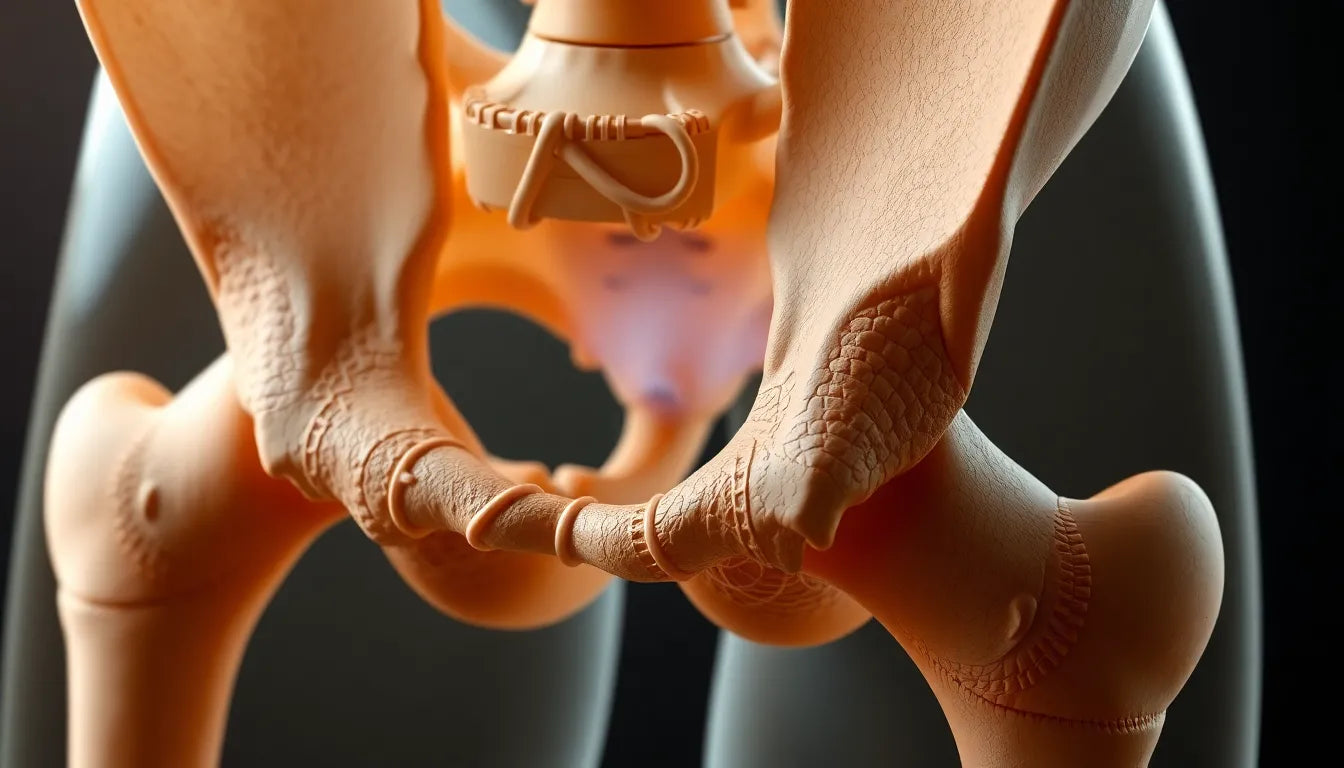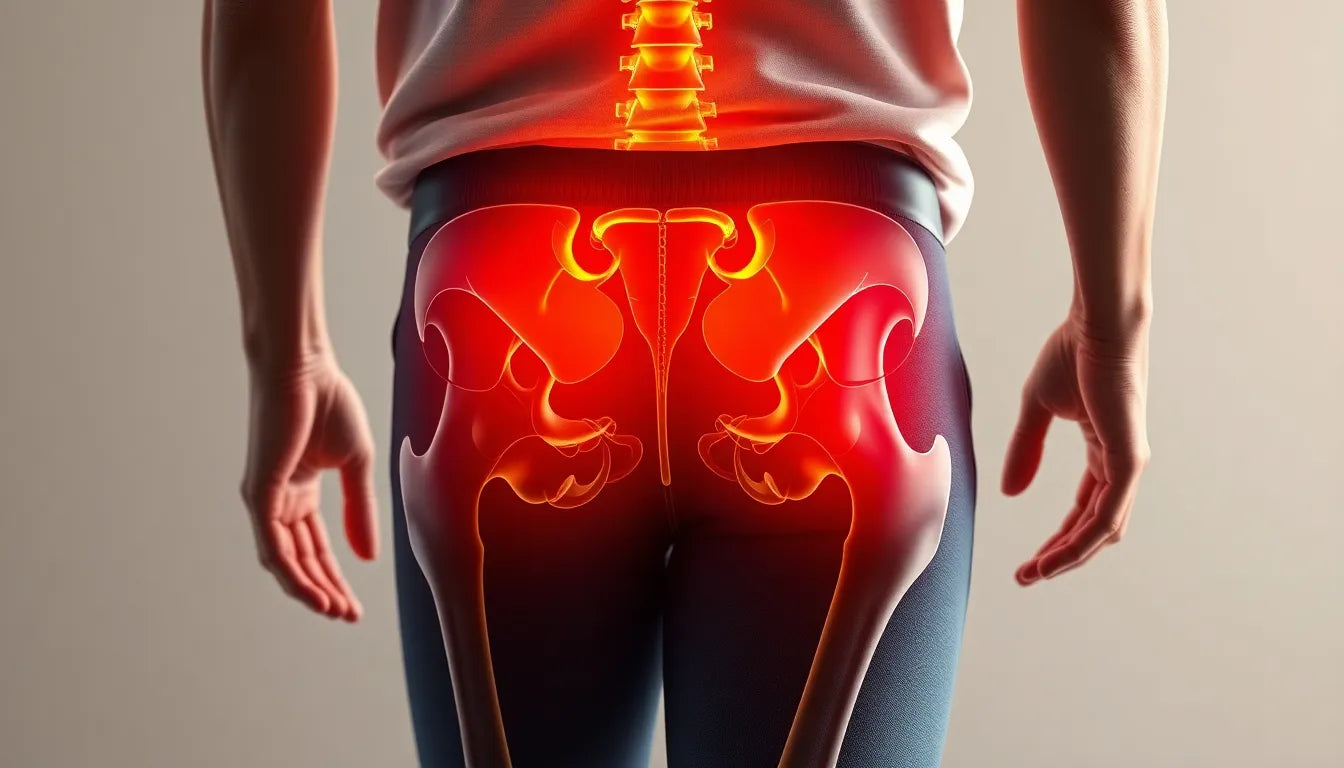Hip bursitis is a common condition that can significantly impact your daily life, causing pain and limiting your movement. It occurs when the bursae, small fluid-filled sacs that cushion the bones, tendons, and muscles near your hip joints, become inflamed. This inflammation leads to discomfort and can interfere with your ability to perform everyday activities. Understanding the different types of hip bursitis and their causes is crucial for effective management and prevention.
Understanding hip bursitis and its types
There are several types of hip bursitis, with the most prevalent being trochanteric bursitis, iliopsoas bursitis, and ischial bursitis. Trochanteric bursitis affects the outer part of the hip and is the most common form. Iliopsoas bursitis occurs in the groin area, while ischial bursitis affects the upper buttock region. Each type can cause varying levels of pain and discomfort, impacting your ability to move freely.
Hip bursitis is not an uncommon condition. It affects a significant number of people, particularly those who engage in repetitive activities or have underlying health issues like arthritis. The pain associated with hip bursitis can be debilitating, making it difficult to walk, climb stairs, or even sit comfortably. As such, it can greatly diminish your quality of life if not addressed promptly.
Common causes of hip bursitis
The causes of hip bursitis are often linked to repetitive stress and overuse of the hip joint. Activities that involve frequent bending or prolonged sitting can contribute to the development of this condition. Injuries, such as falls or direct blows to the hip, can also lead to bursitis. Additionally, poor posture and underlying medical conditions like arthritis increase the risk of inflammation in the bursae.
Lifestyle and occupational habits play a significant role in the onset of hip bursitis. Jobs that require long periods of standing or repetitive movements can strain the hip joint, leading to inflammation over time. Similarly, athletes and individuals who engage in high-impact sports may experience bursitis due to repetitive stress on the hips.
The importance of early recognition
Recognizing the early symptoms of hip bursitis is crucial for preventing chronic pain and further complications. Early signs include pain and tenderness around the hip joint, especially during movement or when lying on the affected side. If these symptoms are ignored, the condition can worsen, leading to more severe pain and limited mobility.
Addressing hip bursitis early can allow you to reclaim your movement and reduce pain through informed self-care and treatment options. By understanding the causes and symptoms, you can take proactive steps to manage the condition effectively and improve your quality of life. In the following sections, we will explore various treatment options and strategies to help you overcome hip bursitis and regain your mobility.
Symptoms and diagnosis of hip bursitis
Recognizing the symptoms of hip bursitis is essential for timely intervention. Common symptoms include pain and tenderness around the hip joint, which can intensify during movement, stair climbing, or when lying on the affected side. Swelling and stiffness are also prevalent, making it challenging to maintain a full range of motion. In more severe cases, individuals might experience redness and warmth around the hip, indicating possible infection.
Diagnosing hip bursitis typically begins with a physical examination by a healthcare professional. The examination may include assessing your pain levels, checking for swelling, and evaluating your hip's range of motion. Imaging tests such as X-rays, MRIs, or ultrasounds can be utilized to rule out other conditions and confirm the presence of bursitis. A differential diagnosis is crucial to distinguish hip bursitis from other hip-related issues, such as arthritis or tendonitis.
Conservative treatment options
Rest and activity modification
One of the first steps in managing hip bursitis is to rest the affected area and modify activities that exacerbate the pain. Avoiding repetitive movements and high-impact activities can significantly aid in reducing inflammation and promoting healing. Allowing your body time to recover is crucial in preventing further irritation of the bursae.
Cold and heat application
Applying cold packs to the hip in the early stages of bursitis can help reduce inflammation and numb the area, providing pain relief. As the condition progresses, heat therapy can be beneficial for relaxing muscles and improving circulation around the hip joint. Alternating between cold and heat applications can optimize recovery and alleviate discomfort.
Medication
Nonsteroidal anti-inflammatory drugs (NSAIDs) like ibuprofen and naproxen are commonly recommended to manage pain and inflammation associated with hip bursitis. These medications can provide significant relief, allowing you to engage in gentle activities that promote healing. However, it is essential to use them under medical supervision to avoid potential side effects.
Physical therapy
Physical therapy plays a vital role in the conservative management of hip bursitis. A physical therapist can design a personalized exercise regimen focusing on stretching and strengthening the muscles around the hip. These exercises improve hip stability, enhance flexibility, and reduce pain. Specific exercises, such as hip bridges, clamshells, and gentle stretching, are often recommended to support recovery and prevent recurrence.
Assistive devices and ergonomic solutions
In some cases, using assistive devices like crutches, canes, or braces can help offload weight from the affected hip, reducing stress and allowing for healing. These devices can be particularly beneficial during the initial recovery phase when movement is painful. Additionally, ergonomic solutions, such as Anodyne's specially designed supports and ergonomic seating, can aid in maintaining proper posture and reducing pressure on the hip joint. These aids can play a crucial role in both recovery and prevention of hip bursitis.

Lumbar support belt
Provides lower back support and relief, ideal for daily activities or sitting.
By understanding the symptoms and exploring conservative treatment options, individuals affected by hip bursitis can take proactive steps to manage their condition effectively. In the next section, we will delve into advanced treatment options and lifestyle adjustments that can further aid in reclaiming movement and enhancing quality of life.
Advanced treatment options for hip bursitis
For individuals who do not find relief through conservative methods, advanced treatment options may be necessary to manage hip bursitis effectively. Corticosteroid injections are often considered for persistent cases, providing significant pain relief by reducing inflammation directly in the bursae. These injections can be an effective short-term solution, especially when combined with physical therapy.
In cases where the bursae are severely swollen or infected, aspiration may be required to remove excess fluid, alleviating pressure and discomfort. If all other treatments fail, surgical intervention might be considered. Minimally invasive techniques, such as endoscopic or arthroscopic surgery, are preferred as they offer reduced recovery times and less postoperative pain. These procedures involve removing or repairing the inflamed bursae, allowing for a quicker return to normal activities.
Prevention and lifestyle adjustments
Preventing hip bursitis from recurring involves making key lifestyle adjustments. Improving posture, especially during activities that involve sitting or standing for prolonged periods, can significantly reduce stress on the hip joints. Maintaining a healthy weight is also crucial, as excess body weight can increase pressure on the hips, exacerbating bursitis symptoms.

Women's Posture Shirt™ - Black
Stimulates muscles and encourages posture, helping relieve pain and tension daily.
Engaging in regular, low-impact exercises such as swimming or cycling can help strengthen the muscles around the hip, providing better support and reducing the risk of inflammation. Tailoring activities to avoid repetitive stress on the hips and incorporating stretching routines can further aid in preventing recurrence.
The role of patient education and self-care
Empowering yourself with knowledge about hip bursitis and its management is essential for long-term recovery and prevention. Understanding the importance of early intervention, recognizing symptoms, and adopting self-care strategies can help you manage the condition effectively. It is crucial to know when to seek professional help, especially if symptoms persist despite self-care efforts.
Proactive approaches, such as identifying and addressing underlying causes like poor posture or repetitive movements, can significantly improve your quality of life. By taking charge of your health, you can reclaim your movement and reduce the impact of hip bursitis on your daily activities.
Frequently Asked Questions
What are the first signs of hip bursitis?
The first signs of hip bursitis include pain and tenderness around the hip joint, particularly during movement or when lying on the affected side. Swelling and stiffness may also be present.
How long does it take to recover from hip bursitis?
Recovery time for hip bursitis varies depending on the severity of the condition and the effectiveness of treatment. With proper management, recovery can range from a few weeks to several months.
Can hip bursitis go away on its own?
Mild cases of hip bursitis may resolve with rest and self-care. However, persistent symptoms often require medical intervention to prevent chronic pain and complications.
Is physical therapy necessary for hip bursitis?
Physical therapy is frequently recommended for hip bursitis as it helps improve mobility, strengthen muscles, and prevent recurrence. A tailored exercise program can significantly aid recovery.
What lifestyle changes can help prevent hip bursitis?
To prevent hip bursitis, maintain a healthy weight, engage in regular low-impact exercise, and practice good posture. Avoid repetitive stress on the hips and incorporate stretching into your routine to reduce the risk of recurrence.
Källor
- American Academy of Orthopaedic Surgeons. "Hip Bursitis." OrthoInfo.
- Aurora Health Care. "Hip Bursitis: Overview and Treatment."
- German, D. "Hip Bursitis." David German MD Orthopaedics.
- YouTube. "Understanding Hip Bursitis."
- Cleveland Clinic. "Trochanteric Bursitis: Symptoms and Treatment."
- Mayo Clinic. "Bursitis: Symptoms and Causes."
- Princeton Orthopaedic Associates. "Hip Bursitis Treatment."
- Froedtert & the Medical College of Wisconsin. "Hip Bursitis."


















